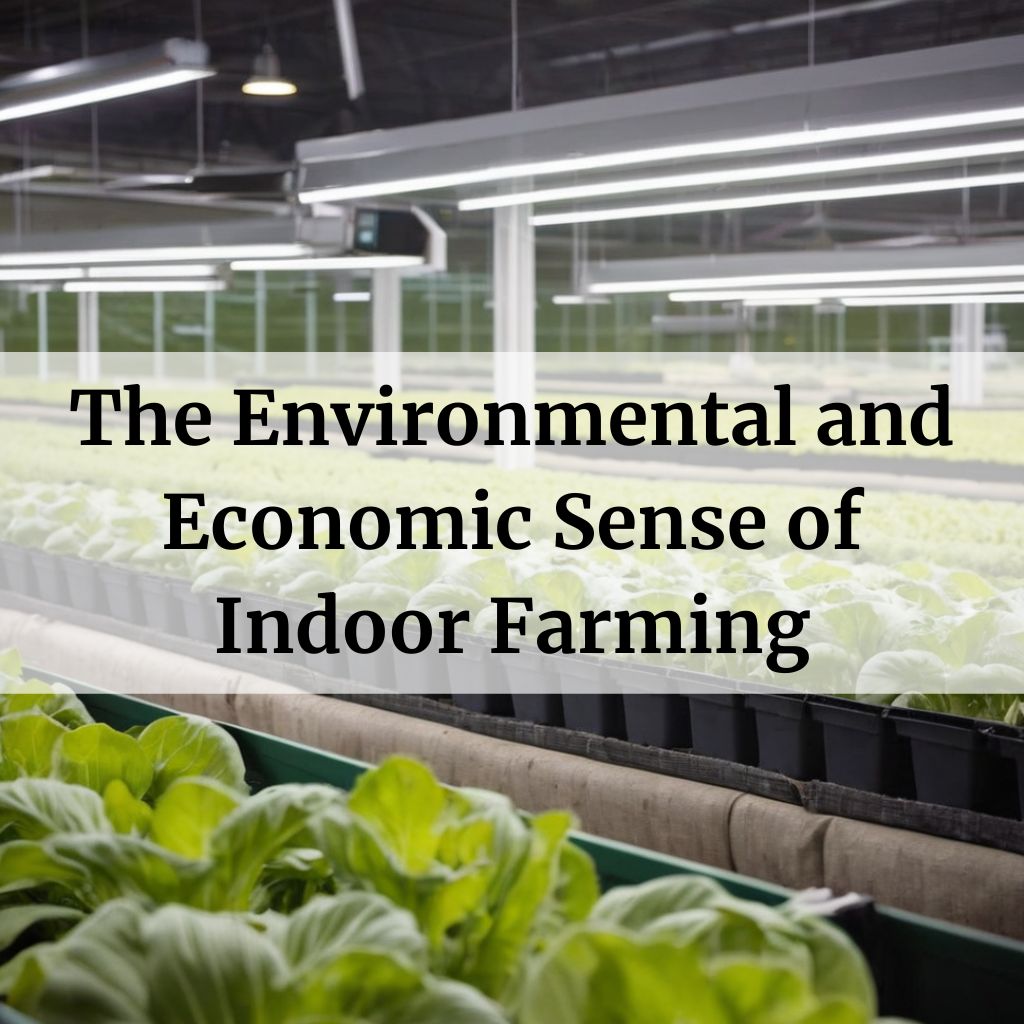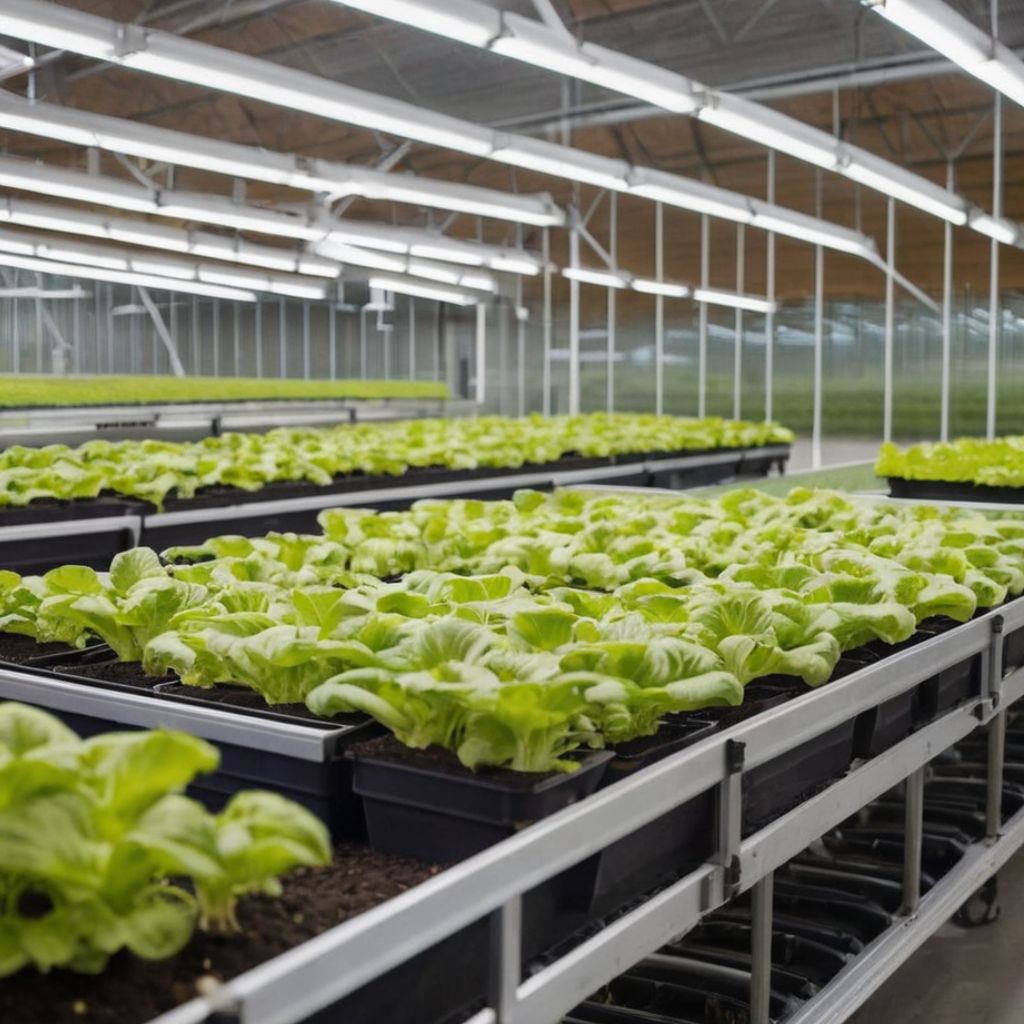
Indoor farming has sparked a debate on its environmental and economic viability, particularly due to concerns about the use of artificial lighting. Critics question the wisdom of replacing the sun, a renewable resource, with artificial light, and advocate for exploring alternative strategies such as field-level tunnels, unheated high tunnels, and greenhouses with heat and supplemental light as more sustainable options. In this article, we debunk the controversy surrounding indoor farming by examining its environmental and economic sense, considering factors such as energy innovation, food security, and sustainability.
In this article
The Carbon Footprint Conundrum

The controversy surrounding indoor farming’s environmental impact has been a topic of intense discussion.
The use of artificial lighting in indoor farming operations has raised concerns about energy consumption and its associated carbon emissions. This has prompted a closer examination of the carbon footprint conundrum within the context of indoor agriculture.
A study by Dr. Louis Albright, an emeritus professor of biological and environmental engineering at Cornell University, delved into the energy consumption, light exposure, and carbon footprint of indoor farming. The study revealed that fully lit indoor systems produce a significant amount of CO2, raising questions about the environmental benefits of such practices.
Energy Consumption and Carbon Emissions
Indoor farming systems, especially those reliant on artificial lighting, demand significant energy inputs, contributing to elevated carbon emissions.
The substantial energy consumption of these systems has drawn parallels to other industries, such as AI and building construction, where energy-intensive processes have raised similar environmental concerns.
Sustainability Challenges and Ethical Considerations
The carbon footprint conundrum extends beyond the immediate environmental impact, encompassing broader sustainability challenges and ethical considerations.
The ethical quandaries associated with the expanding realm of AI, for instance, underscore the need for sustainable practices and carbon-efficient solutions.
Path to Carbon-Efficiency in Indoor Farming
Addressing the carbon footprint conundrum in indoor farming necessitates a holistic approach that integrates carbon accounting, energy-efficient technologies, and sustainable practices.
Embracing carbon-efficient means of optimizing software and hardware, as seen in the context of AI, can serve as a guiding principle for achieving carbon-efficient indoor farming operations.
In navigating the carbon footprint problem, the indoor farming industry is presented with an opportunity to prioritize sustainability, innovate towards energy efficiency, and contribute to the broader discourse on environmental responsibility.
By acknowledging the challenges and ethical implications associated with carbon emissions, the industry can pave the way for sustainable indoor farming practices that minimize environmental impact while maximizing productivity.
Balancing Innovation and Sustainability
While indoor farming offers the potential to revolutionize agriculture, it comes with higher upfront costs and a larger carbon footprint compared to traditional farming methods.
Here are some key considerations:
The Cost and Affordability Challenge
One of the primary economic challenges for sustainable food systems innovation is the cost of implementing and adopting sustainable practices.
Sustainable farming methods, such as organic farming or regenerative agriculture, often require additional investments in infrastructure, technology, and training.
Indoor farming, with its reliance on artificial lighting and precise environmental control, can be expensive to set up and maintain.
However, advancements in energy-efficient lighting, robotics, and artificial intelligence are driving the evolution of indoor farming, aiming to address the economic challenges associated with this practice.
The Carbon Footprint Conundrum
The use of artificial lighting in indoor farming operations has raised concerns about energy consumption and its associated carbon emissions. Indoor farming systems, especially those reliant on artificial lighting, demand significant energy inputs, contributing to elevated carbon emissions.
Addressing the carbon footprint conundrum in indoor farming necessitates a holistic approach that integrates carbon accounting, energy-efficient technologies, and sustainable practices.
The Need for Self-Sufficient, Localized Production Systems
The need for self-sufficient, localized production systems is becoming increasingly apparent.
The COVID-19 pandemic has highlighted the fragility of global supply chains, emphasizing the importance of local food production.
Indoor farming presents an opportunity to produce fresh, healthy food in urban areas, reducing the need for long-distance transportation and minimizing food waste.
The Path to Sustainable Indoor Farming
Despite the controversies, indoor farming presents opportunities for innovation and sustainability. Embracing carbon-efficient means of optimizing software and hardware, as seen in the context of AI, can serve as a guiding principle for achieving carbon-efficient indoor farming operations.
Advancements in energy-efficient lighting, robotics, and artificial intelligence are driving the evolution of indoor farming, aiming to address the environmental and economic challenges associated with this practice.
Is Indoor Farming Here to Stay? Our Verdict
Yes! Indoor farming has long term viability and is a solution for sustainable food production. Here’s why:
Indoor farming is poised to experience continued growth in the medium term, its long-term future hinges on addressing critical challenges related to energy efficiency, profitability, and scalability. The industry’s ability to innovate, adopt sustainable practices, and integrate with existing agricultural systems will play a pivotal role in shaping the trajectory of indoor farming in the years to come.
Medium-Term Verdict
In the medium term, the expansion of indoor farming is expected to continue, driven by advancements in technology, energy efficiency, and the growing demand for locally sourced produce.
The industry has made significant strides in recent years, with the adoption of sustainable business models and a decrease in the costs associated with indoor farming.
As technology analyst Brandon Beh highlights, the next decade is likely to witness further expansion as vertical farms adopt more sustainable business models and the costs of vertical farming decrease.
Long-Term Verdict
Looking ahead to the long term, the future of indoor farming remains uncertain. While indoor farming offers the potential to revolutionize agriculture, challenges related to profitability, energy consumption, and scalability persist.
The high energy costs associated with indoor farming have raised concerns about its long-term sustainability, particularly in the context of addressing climate change and resource efficiency.
Additionally, the economic challenges, including steep start-up costs and the need to grow high-value crops to generate significant revenue, pose obstacles to widespread adoption.
In conclusion: as the industry continues to evolve, it is essential to prioritize sustainable practices and explore alternative strategies to ensure the long-term viability of indoor farming.







